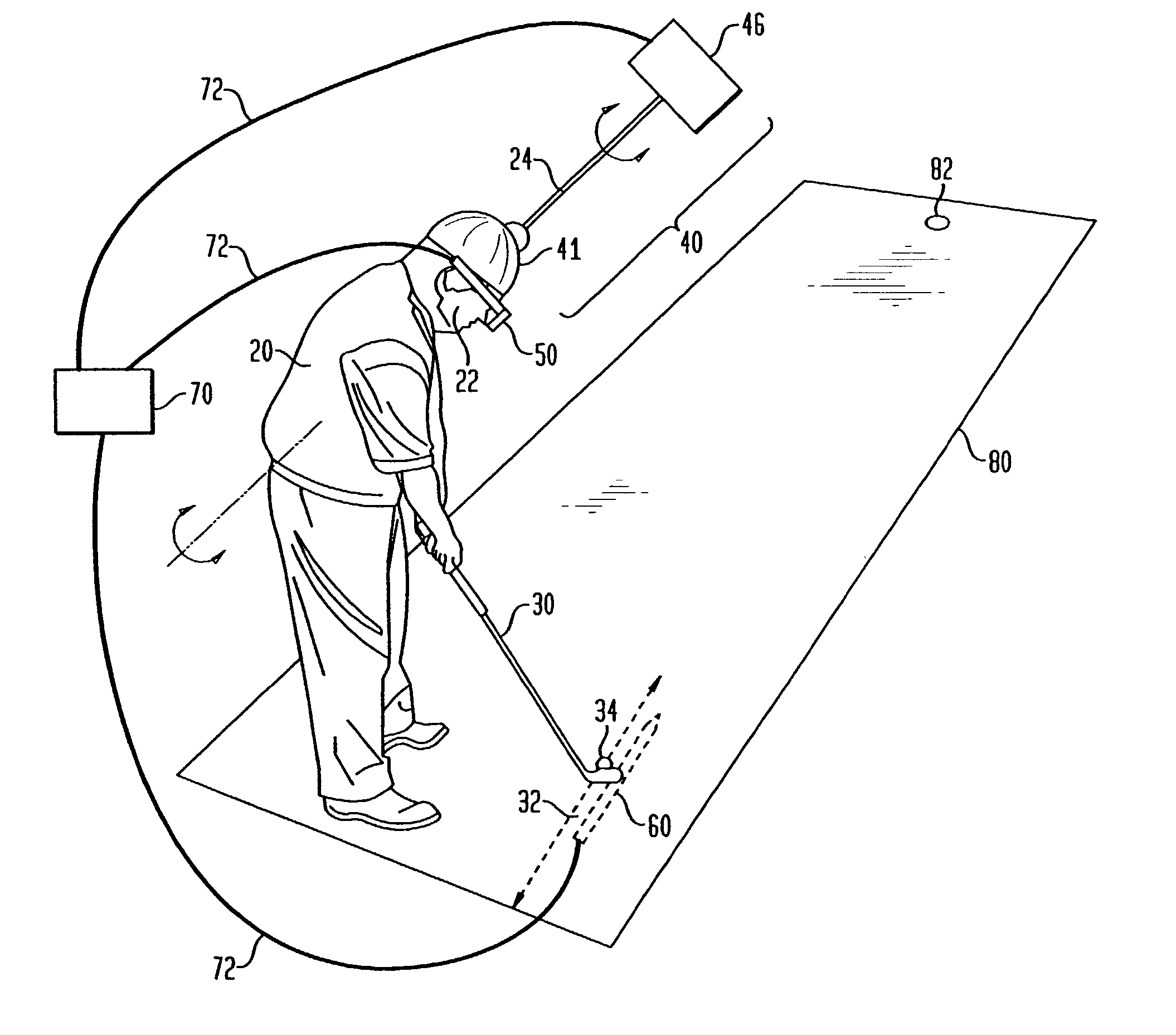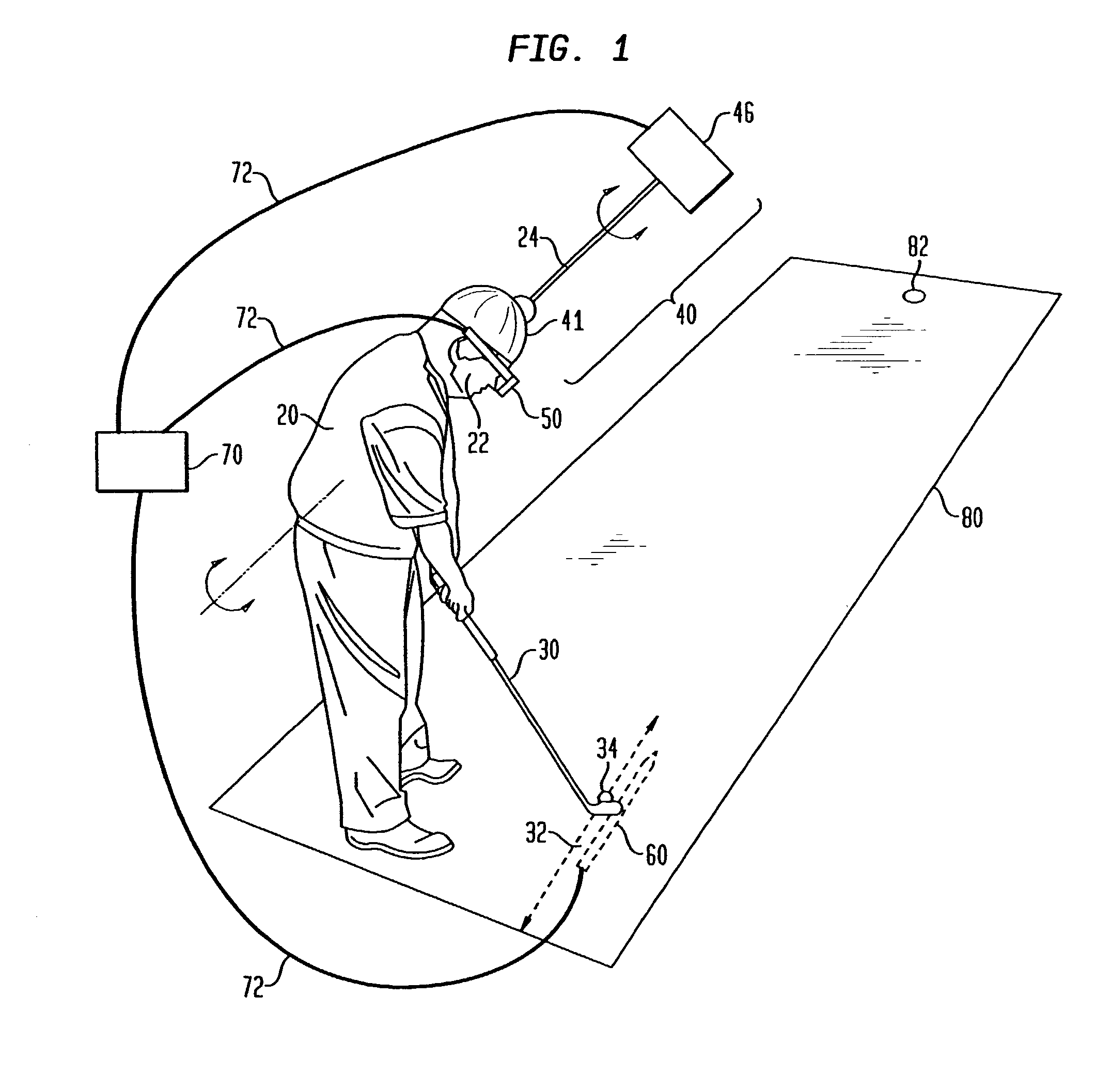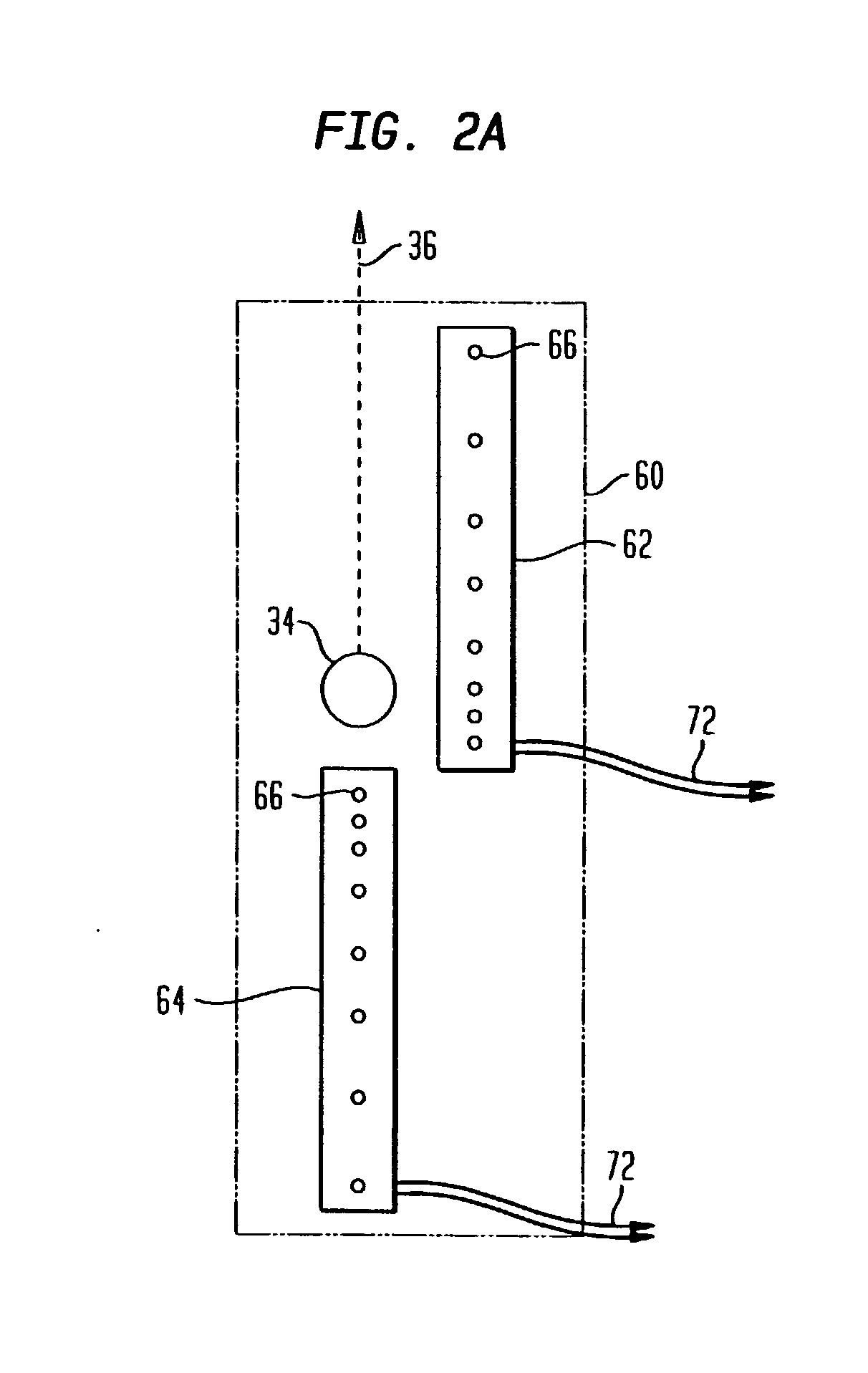Method and apparatus for analyzing a golf stroke
a golf stroke and analysis method technology, applied in the field of golf stroke analysis, can solve the problems of misalignment, missed putts, and methods that do not allow real-time analysis of golf strokes, and achieve the effect of determining the accuracy and efficiency of golf strokes
- Summary
- Abstract
- Description
- Claims
- Application Information
AI Technical Summary
Benefits of technology
Problems solved by technology
Method used
Image
Examples
Embodiment Construction
[0079] The apparatus of the present invention was experimentally tested on twelve volunteers, divided into three groups according to skill levels. Individuals with handicaps between 0 and 9 were placed in the first group, and individuals with handicaps between 10 and 20 were placed into the second group. Novices were placed into the third group. Each group had four volunteers. Each subject made twenty 3-foot putts and twenty 9-foot putts using the present invention, and results for each of the volunteers were compared. It was found that the typical low-handicapper exhibited a small head rotation (i.e., clockwise as seen from top) during the backstroke, compensated for by a smooth eye movement (i.e., vestibulo-ocular reflex), wherein steady eye fixation on the ball was maintained. Head rotation appeared to be associated with a slight shoulder turn during the putting stroke, and occurred less frequently for 3-foot putts but occasionally appeared for 9-foot putts. The typical mid-handi...
PUM
 Login to View More
Login to View More Abstract
Description
Claims
Application Information
 Login to View More
Login to View More - R&D
- Intellectual Property
- Life Sciences
- Materials
- Tech Scout
- Unparalleled Data Quality
- Higher Quality Content
- 60% Fewer Hallucinations
Browse by: Latest US Patents, China's latest patents, Technical Efficacy Thesaurus, Application Domain, Technology Topic, Popular Technical Reports.
© 2025 PatSnap. All rights reserved.Legal|Privacy policy|Modern Slavery Act Transparency Statement|Sitemap|About US| Contact US: help@patsnap.com



